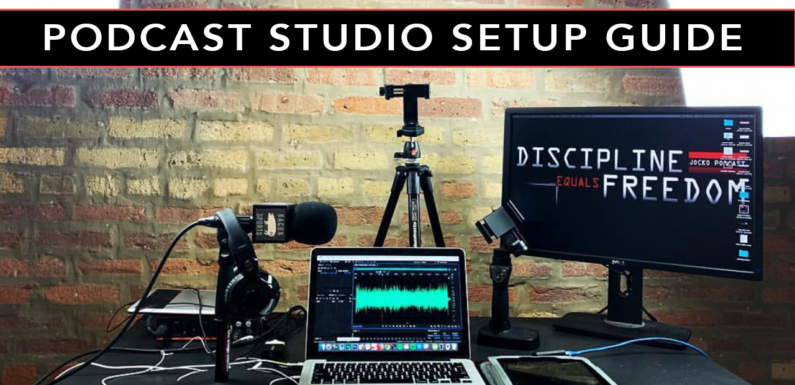
So, you want to start your own podcast studio, huh?
Well, buckle up, because we’ve got all the insider knowledge you need to get started. From essential recording equipment to soundproofing and acoustic treatment, we’ve got you covered.
And don’t worry, we’ll walk you through the ins and outs of podcast editing software and tools, as well as the best hosting and distribution platforms.
Get ready to take your podcasting game to the next level, my friend.
Let’s dive in!
Essential Recording Equipment
You definitely need a good microphone for recording your podcast episodes. The microphone selection is crucial as it directly affects the audio quality of your podcast.
There are various types of microphones available, such as dynamic, condenser, and ribbon microphones. Dynamic microphones are durable and can handle loud sounds, making them suitable for recording in less than ideal environments.
Condenser microphones are highly sensitive and capture more detail, making them ideal for studio recording. Ribbon microphones are delicate and require careful handling but provide a warm and vintage sound.
Additionally, you should consider using an audio interface to connect your microphone to your computer. An audio interface helps in converting the analog audio signal into a digital format, ensuring high-quality recordings. It also provides additional features like gain control and headphone monitoring, enhancing your recording experience.
Soundproofing and Acoustic Treatment
If you’re looking to improve the audio quality of your podcast, consider investing in soundproofing and acoustic treatment to minimize background noise and echo. This can greatly enhance the listening experience for your audience.
Here are three key things to consider when it comes to soundproofing and acoustic treatment for your podcast studio:
– Soundproofing materials: Using materials like acoustic panels, bass traps, and soundproof curtains can help absorb and reduce unwanted noise from entering or leaving your recording space. This ensures that your podcast recordings are clear and free from distractions.
– Microphone selection: Choosing the right microphone is crucial for capturing high-quality audio. Consider using a dynamic microphone, as they’re less sensitive to background noise and can provide a focused and clear sound. Additionally, using a shock mount and pop filter can further improve the audio quality by reducing handling noise and plosives.
– Room acoustics: Properly treating your podcast studio with acoustic panels and diffusers can help control the reflections and reverberations within the room. This results in a more balanced and natural sound, without any unwanted echoes or resonances.
Podcast Editing Software and Tools
There are many podcast editing software and tools available that can help you efficiently edit your episodes on a regular basis. These tools range from basic editing software like Audacity, to more advanced options like Adobe Audition and GarageBand.
With these tools, you can easily cut out mistakes, add music and sound effects, adjust volume levels, and even enhance the overall sound quality of your podcast.
Additionally, podcast editing software often includes features that allow you to normalize audio levels, remove background noise, and apply EQ and compression to make your podcast sound professional and polished.
By using these tools, you can ensure that your podcast episodes are well-edited and ready for publishing.
As you continue to improve your podcast recording techniques and explore podcast monetization strategies, having a reliable editing software will be crucial in delivering high-quality content to your audience.
Hosting and Distribution Platforms
First, consider using hosting and distribution platforms like Libsyn or Anchor to easily publish and share your podcast with a wide audience. These platforms offer a range of features to help you grow your podcast and reach more listeners.
Here are some key benefits:
– Monetization strategies: Both Libsyn and Anchor provide monetization options, such as sponsorships and paid subscriptions, which can help you generate income from your podcast.
– Marketing and promotion techniques: These platforms offer built-in marketing tools, including social media sharing and integration with podcast directories, to help you promote your podcast and increase its visibility.
– Analytics and insights: With Libsyn and Anchor, you can track your podcast’s performance, including downloads, listener demographics, and engagement metrics, to gain valuable insights and make data-driven decisions.
Conclusion
Congratulations!
Now that you have all the essential recording equipment, soundproofing and acoustic treatment, podcast editing software and tools, as well as hosting and distribution platforms, you’re ready to create a podcast studio that will amaze your audience.
With the perfect blend of technology and creativity, your studio will be an oasis of professional audio production.
So, get ready to dive into the world of podcasting and let your imagination run wild as you captivate your listeners with your unique voice and engaging content.
Happy podcasting!


